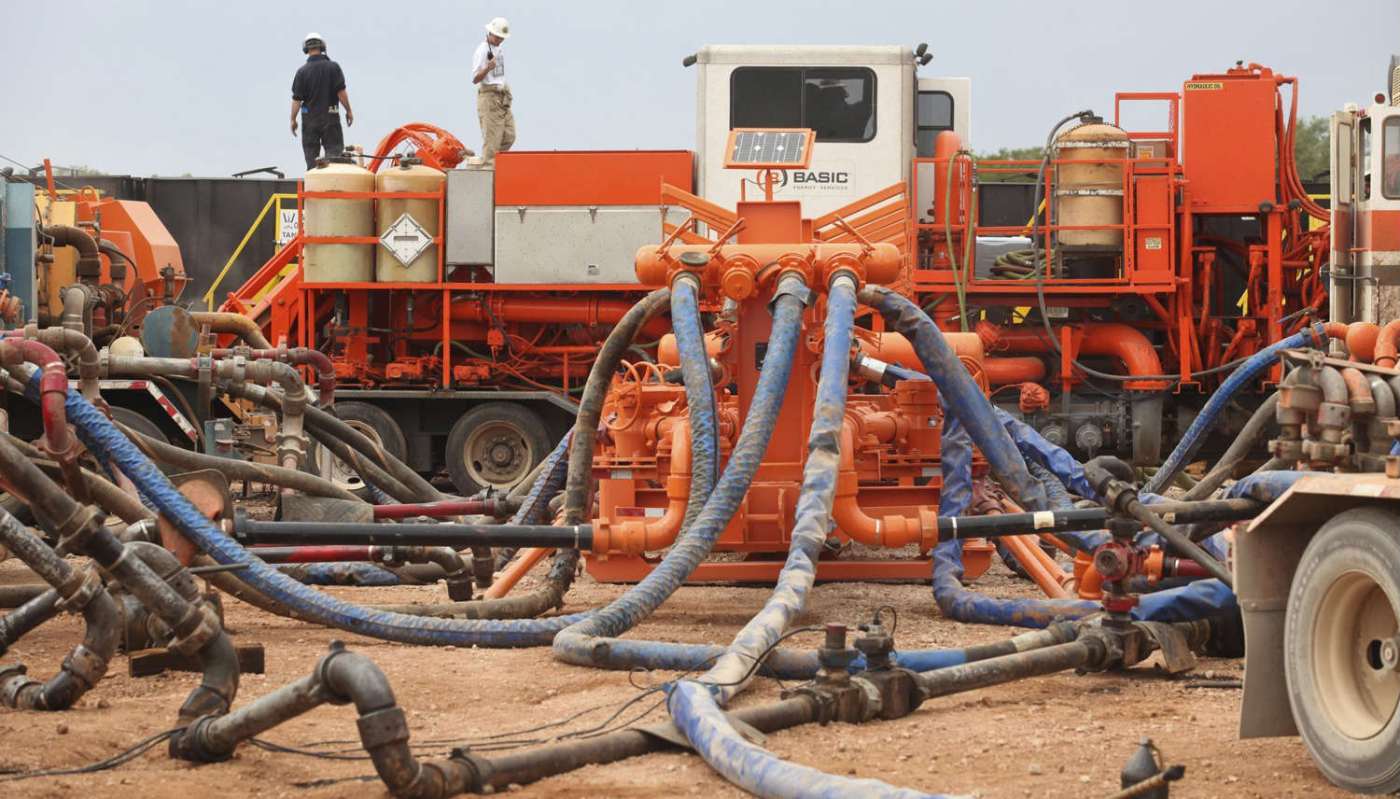
It’s been a shaky week in Oklahoma. The Sooner State has experienced more than 150 earthquakes over the past week, far more than the Okies usually get. And while the vast majority of the quakes were fairly minor, one, on Feb. 16 measured 3.8 on the Richter scale, followed by a number of aftershocks. There’s been little damage reported, but the quakes jolted folks in a part of the country who aren’t accustomed to the Earth moving under their feet. “[It] felt like bombs going off,” central Oklahoma resident Nancy York told ABC News affiliate KOCO-TV. “It’s just a huge noise and then it’s like a reverb from that boom that just shakes the entire house.”
Something is clearly going on in Okalahoma—and has been for a while now. Residents have experienced more than 200 quakes with a magnitude of at least 3.0 since the beginning of 2009, and more than 2,600 tremors altogether during 2013. (A 3.0 magnitude quake is considered the threshold at which most people can feel shaking.) According to a recent analysis by EnergyWire, Oklahoma is now the second most seismically active state in the continental U.S., after California.
So what’s happened? Suspicion has turned to the energy sector. Oklahoma is the center of the country’s hydrocarbon industry, with tens of thousands of oil and gas wells dotting the state. Some of those wells have been drilled with the use of hydrofracking, in which explosives are used to generate cracks in a layer of shale rock thousands of feet below the surface. Millions of gallons of fracking fluid—most of which is water—are then pumped underground to keep the cracks open, allowing oil and natural gas that had been trapped in the shale rock to flow back to the surface. Surely it’s not too difficult to think that a process meant to break up the ground could end up triggering an earthquake.
(MORE: Your City Might Not Be Ready for the Next Big Quake)
But while a few studies have linked the act of fracking to minor earthquakes, there’s no definitive proof yet that fracking by itself can cause noticeable quakes. What’s more likely at fault are wastewater disposal wells. When an oil or gas well has been drilled, millions of gallons of wastewater—tainted with hydrocarbons and any number of other unhealthy contaminants—flow back up to the surface. That wastewater needs to be contained, so companies drill new wells, and inject the liquid underground at extremely high pressures. It’s entirely possible that the high water pressure used in these injection wells—and there are more than 10,000 of them in Oklahoma—may nudge previously dormant faults out of their locked position. A study published in Science last year linked unusual earthquakes in Ohio to the presence of nearby disposal wells, and other research in Oklahoma has raised similar concerns.
It’s not yet clear exactly how disposal wells might be causing or contributing to these unusual “swarms” of earthquakes. It’s possible there’s something more natural at work. Austin Holland, Oklahoma’s state seismologist, has raised the possibility that historically high water levels at Oklahoma’s Lake Arcadia may be playing a role, perhaps by placing additional stress on dormant faults. In any case, though, Oklahoma is not alone—other normally calm states like Kansas, Arkansas and Texas have experienced unusually heavy seismic activity in areas near oil and gas drilling and disposal wells. Kansas Governor Sam Brownback announced on Feb. 17 that he would appoint a committee to study what role oil and gas activity might be playing in a recent spate of minor quakes in the state. Given that oil and natural gas production is on the rise in the U.S.—and that there are more than 30,000 deep injection wells throughout the country—that’s a question that needs an answer.
(MORE: How Earthquakes Heal Themselves — and Why That’s Important)
More Must-Reads from TIME
- Donald Trump Is TIME's 2024 Person of the Year
- Why We Chose Trump as Person of the Year
- Is Intermittent Fasting Good or Bad for You?
- The 100 Must-Read Books of 2024
- The 20 Best Christmas TV Episodes
- Column: If Optimism Feels Ridiculous Now, Try Hope
- The Future of Climate Action Is Trade Policy
- Merle Bombardieri Is Helping People Make the Baby Decision
Contact us at letters@time.com